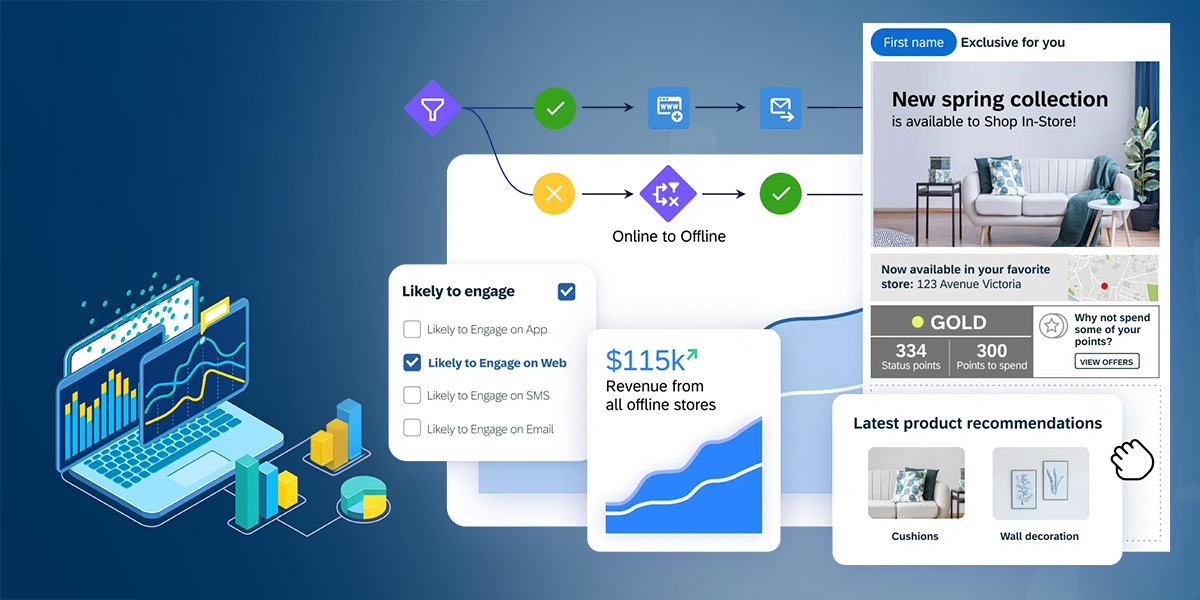CRM is dead. Now what?

A few days ago, I started looking for an electric mountain bike — something to keep me active, since thanks to a spinal injury and an upcoming surgery, it’s pretty clear there won’t be any golf or hiking for me this year.
And even though I haven’t talked to a single salesperson, at least three brands already know exactly what I’m after. How?
Let me use this example to explain the difference between CRM systems and Customer Engagement Platforms (CEPs). Think about how you shop, how you research before buying, how and when salespeople get involved. And whether they still have any real influence on your decision…
Let’s take a step back.
The fastest-growing companies do things differently
Over the last few years, I’ve noticed three things all fast-growing companies have in common:
- They’ve got a great product. No surprise there — that’s the baseline.
- They invest in customer experience — they don’t wait for buyers to make the first move. Instead, they actively guide the journey, which more often than not happens without a single sales interaction.
- They don’t rely (only) on ads anymore. They’re building their own channels and direct communication lines.
What’s the common thread here? 👉 None of these strategies are built on CRM.
CRM: Great database. Terrible compass.
Most companies still believe that a new CRM will finally help them understand their customers.
Hate to break it to you — it won’t.
CRM is a tool for managing sales activity (i.e., what your reps are doing) and keeping track of contacts. It tells you who once talked to you. Not who’s thinking about leaving right now.
A customer is not a “contact” in your CRM. They’re a real person — with context, behavior, and their own decision-making journey.
In a world where shopping starts on Instagram, continues on your website, and maybe ends in a store, your CRM misses the whole thing. Your team shows up too late — or not at all.
What CRM can do:
✔ Track past interactions
✔ Manage contacts and inquiries
✔ Handle basic segmentation and target-based campaigns
What it can’t do:
✘ Detect customer behavior in real time
✘ Guide customers across channels
✘ Tailor communication to the moment and the context
If you’re thinking in CRM terms, you’re thinking about internal efficiency.
If you’re thinking about growth — you need more than that.
CEP: A system that knows how to talk to customers
A Customer Engagement Platform (CEP) isn’t “CRM 2.0.” It’s a whole new mindset.
Just like Netflix isn’t just a modern video rental store — it’s a whole new experience.
A CEP isn’t a sales tool. It’s a tool for marketing and e-commerce teams.
For people who want to be where the action really happens — on social media, in emails, apps, websites, messaging platforms, chatbot convos, even with AI — and all of it in real time.
What a CEP like SAP Emarsys can do:
✔ Personalize communication based on customer behavior
✔ Automate omnichannel campaigns (triggered and targeted)
✔ Guide thousands of customers along dynamic buying journeys — without waiting on IT or marketing
CRM and CEP can work side by side:
• CRM handles the human-to-human side.
• CEP handles the system-to-human side — exactly when it matters most.
So what does this look like in real life?
Example: Shoppster
Shoppster rolled out more than 9 automated revenue-driving tactics using Emarsys — across two regions. These included:
• Personalized pricing in emails
• AI-driven product recommendations
• Interest-based newsletters
The results:
📈 9% of revenue directly from Emarsys
📈 48% of revenue in one region from automation tactics
📈 27% reactivation of almost-lost customers
📈 14% higher average order value
No extra headcount. No waiting for IT. Just results — because they enhanced their CRM with a CEP.
The real question: How do you know if you’re thinking the right way?
How many times has your CRM told you a customer was about to leave? Or that they were about to buy — and exactly what they were about to buy?
Never? That’s exactly why CEPs exist.
If you’re focused on CRM, you’re thinking about processes and control.
If you’re focused on CEP, you’re thinking about customers, revenue, and impact.
CRM tells you what already happened.
CEP tells you what’s happening now — and what you should do next.
No need to replace your CRM. Just give it a brain.


